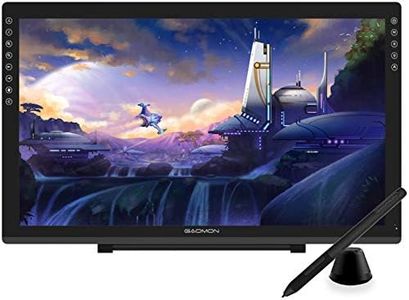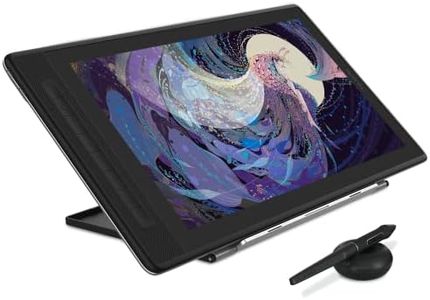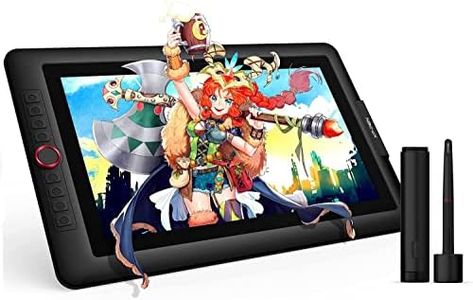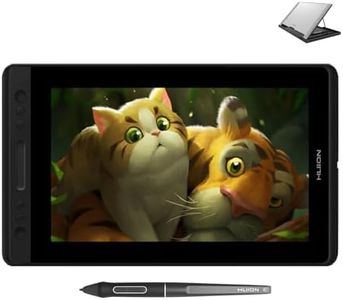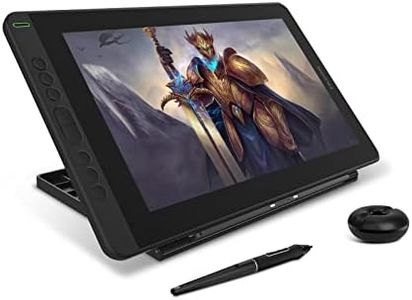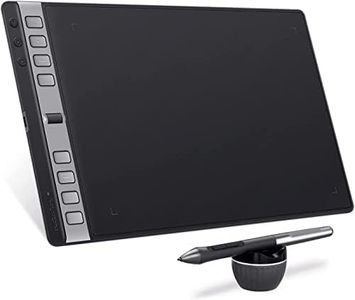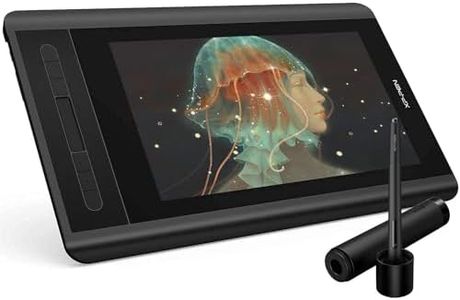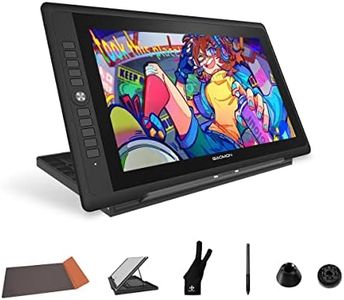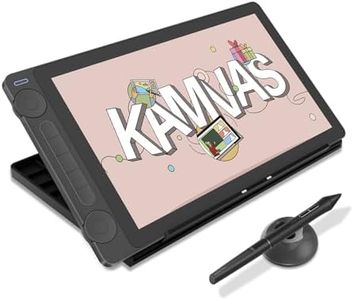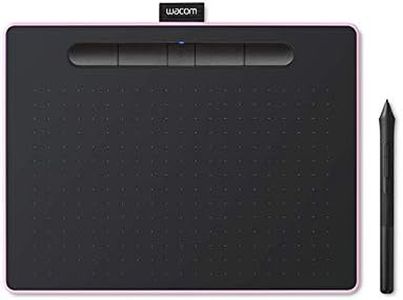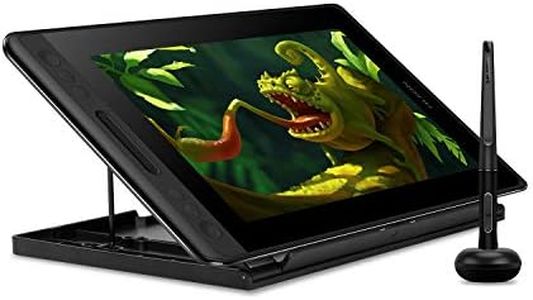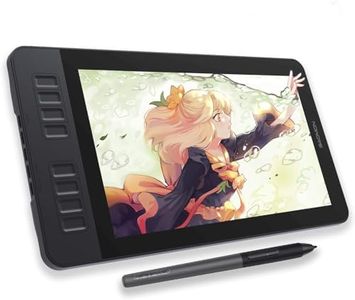We Use CookiesWe use cookies to enhance the security, performance,
functionality and for analytical and promotional activities. By continuing to browse this site you
are agreeing to our privacy policy
10 Best Graphic Drawing Tablets
From leading brands and best sellers available on the web.Buying Guide for the Best Graphic Drawing Tablets
When choosing a graphic drawing tablet, it’s important to think about how you plan to use it—whether you’re a hobbyist, student, or professional. Your ideal tablet should feel comfortable to draw on, connect seamlessly with your computer or device, and be suited to your creative style. Pay attention to the size, pen performance, display quality (if any), and connection options. By understanding the main specs, you can match your needs with a tablet that helps bring your ideas to life.Active Area SizeThe active area is the part of the tablet that responds to your pen, essentially acting as your digital canvas. It’s important because it determines how much space you have to draw or design. Tablets come in various sizes: small, medium, and large. A small active area is more portable and easier to fit on cluttered desks, but may feel cramped for detailed work. Medium accommodates most users comfortably and balances portability with drawing space. Large provides the most space for sweeping strokes, ideal for users who prefer working on bigger artworks or across multiple displays. Choose based on your work style, desk space, and how much you like to move your hand while drawing.
Pen Pressure SensitivityPressure sensitivity indicates how many distinct levels of pressure the tablet pen can detect. Higher values allow for more subtle differences in line thickness and opacity based on your hand pressure, making digital drawings feel more natural. Entry-level tablets may offer around 2,048 levels, while advanced ones go up to 8,192. For regular note-taking or simple sketches, lower levels are usually enough; for detailed illustration, shading, or professional work, higher sensitivity gives better control and smoother transitions.
Resolution (LPI – Lines Per Inch)Resolution, measured in Lines Per Inch (LPI), tells you how detailed your drawing surface is—higher values mean the tablet can capture finer movements and more detail. Typical ranges are from 2,000 to over 5,000 LPI. For everyday sketching or novice users, a modest number is sufficient; intricate artists or designers may want a higher LPI to capture every nuance of their strokes. Your drawing style and expectation for detail will help you decide here.
Pen Technology and ResponsivenessPen technology includes how the pen interacts with the tablet and how quickly it responds to your movements (often referred to as lag). Modern pens are usually battery-free and offer tilt recognition, which is useful for shading and varied brush effects. Beginners may not need advanced pen features, but professionals might rely on lower lag and a pen that supports tilt or customizable buttons for extra workflow efficiency. Think about what drawing feels most natural to you and whether you need extra features like eraser tips or shortcut keys.
Screen Type (Display or Non-Display Tablet)Some graphic tablets have built-in screens you can draw directly on, while others are non-display (you draw on the tablet and see the results on your computer screen). Display tablets feel more intuitive, like drawing on paper, and are great for direct interaction. Non-display types are often lighter and more affordable, but have a learning curve since your hand and eyes aren’t on the same spot. If you value seeing your strokes exactly as you make them or want the closest feel to paper, choose a display tablet. If you prefer portability or want to use it alongside a separate monitor, a non-display tablet works well.
Connection OptionsTablets can connect via USB, Bluetooth, or other wireless options. USB connections are reliable and fast, but mean a cord is always attached. Bluetooth or wireless options offer more freedom, especially for working in different spaces, though they might need charging more often. Consider your workspace, how often you want to move the tablet around, and if you’re comfortable managing cables or batteries.
Compatibility (Operating System & Software)It’s crucial that your tablet works with your computer’s operating system (like Windows, macOS, or even Android). Some tablets also support iOS or run as standalone devices. Software compatibility ensures that your favorite programs (Photoshop, Illustrator, etc.) will run smoothly with the tablet features. Check both operating system and software requirements before choosing, especially if you rely on specific creative applications.
